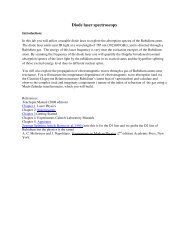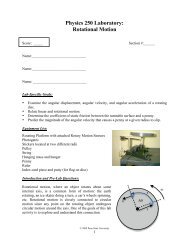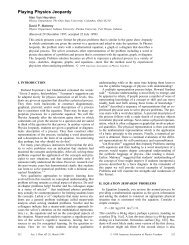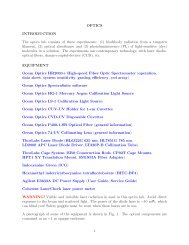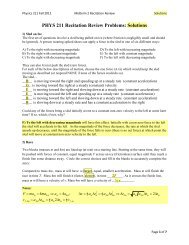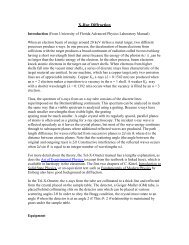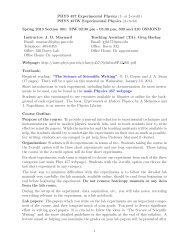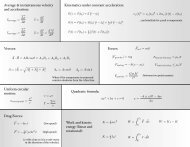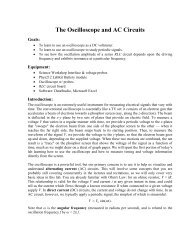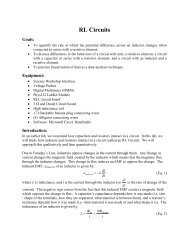Static Electricity (Lab 01)
Static Electricity (Lab 01)
Static Electricity (Lab 01)
You also want an ePaper? Increase the reach of your titles
YUMPU automatically turns print PDFs into web optimized ePapers that Google loves.
Q5. Summarize the interactions between two T-strips, between two B-strips and between a T-<br />
strip and a B-strip.<br />
T-T interaction: (a) no interaction (b) they attract (c) they repel<br />
B-B interaction: (a) no interaction (b) they attract (c) they repel<br />
T-B interaction: (a) no interaction (b) they attract (c) they repel<br />
Q6. In Q4, you determined the sign of charge on the T-strip. Based on that sign, and the<br />
interactions above, what is the sign of the B-strip? Describe how you could use the same method<br />
you described in Q4 to verify the sign of the B-strip, and do so.<br />
It seems likely that B is negatively charged (opposite sign of T). It isn’t neutral because it repels<br />
the other B.<br />
We can try to confirm by seeing if it is repelled by the negatively charged PVC<br />
Q7. Given that you made certain that the pair of tape strips was neutral before separating the<br />
strips, is it possible to create a T-strip and B-strip that repel each other? Explain why or why not.<br />
No. To repel they must have the same sign of charge, which would require a net charge.



